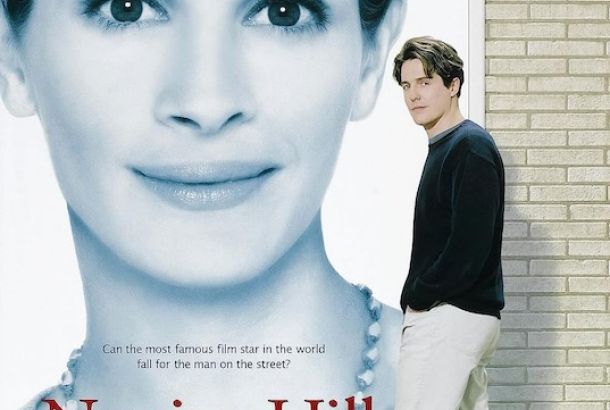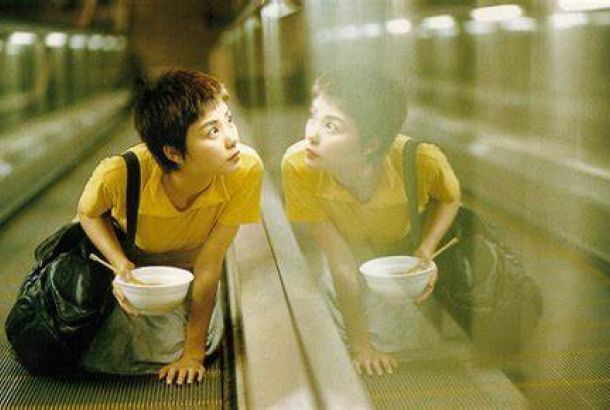Global Cinema Series: Touching Down in Japan

Like Father, Like Son – Daniella Alconaba
Hirokazu Koreeda has long been hailed as an auteur. It is easy to identify a Koreeda film as he has crafted such a unique, warm but poignant filmic style. His films have garnered high critical praise for their mastery in dealing with family subjects. Koreeda’s beautiful film Like Father, Like Son (2013) won The Jury Prize at Cannes Film Festival. Koreeda often challenges the idea of the nuclear family. It seems he loves to explore unconventional family dynamics. He defines connections between a child and their caregiver as a malleable structure that is built upon, rather than an idea that it is rigid. An emphasis is made that family is not bound by blood but by unconditional love.
The film deals with two families tied together by a mutual issue. A hospital accident meant their six-year-old sons were mistakenly switched at birth. An issue that would change the trajectory of their lives. In one family the father Ryota is an architect with an authoritarian style of parenting. The other father Yudai is a shopkeeper who is laidback and playful. The nature or nurture debate is discussed throughout the film. Contentions between the two are had within Ryota. Whilst for everyone else it seems the issue is not debatable. The love they have for the child they raised is strong enough.
This story is told so delicately. Koreeda’s past in documentary filmmaking is evident in his fictional films. He has such a way of breathing sympathy into his characters through his storytelling. It is easy to hate Ryota as a character for the way he treats his son. However, it feels impossible to when his own past is revealed. Koreeda writes characters that are so complex and fundamentally human in the way they react to unthinkable situations in life. He portrays children’s emotions in a non-patronising way.
It is accurate how Koreeda can emulate the idea that as children emotions feel bigger than the body itself. Words and any means of explaining rational thoughts are out and impulse kicks in. This is also a testament to the great performances of the child actors. Koreeda’s films ultimately celebrate the human condition and the loved ones within it.
Films similar to Like Father, Like Son:
- Nobody Knows (2004)
- I Wish (2011)
- Still Walking (2008)
The films of Akira Kurosawa – Joe McFadden
To talk about Japanese cinema without mentioning the name Akira Kurosawa would be an impossible feat. Over the years many great directors have named him as an influence on their work. Scorsese, Lucas, Spielberg, Kubrick, Altman, Bergman, and Tarkovsky have all named Kurosawa as their inspiration whilst Sydney Lumet once called him the “Beethoven of movie directors”. Indeed, it is nigh impossible to talk about 20th-century cinema without so much as name-dropping Kurosawa.
Best known for his samurai films like Rashomon, Seven Samurai, and Yojimbo, Kurosawa’s career spanned almost 70 years and 30 feature films. His first major success was Rashomon (1950), which follows multiple characters telling the story of a murdered samurai. Set in medieval Japan, each character tells the story from their perspective, embellishing the details to make themselves appear heroic or just to save face. The film itself is a masterful drama; a taut, insightful look at psychology and why people are inherently dishonest.
Seven Samurai (1954) is considered by many to be Kurosawa’s magnum opus and it wouldn’t be an exaggeration to say it is the most influential Japanese film of all time. The film follows seven rōnin – masterless, wandering samurai – who are hired to defend a village of peasants from raiding bandits. Clocking in at a hefty three-and-a-half hours, Seven Samurai is an epic in all meanings of the word. Every single detail, however, from the performances to the editing, is perfect.
A particular highlight is Kuroswaa’s great collaborator Toshiro Mifune as Kikuchiyo, the samurai-pretender who eventually proves his honour. Mifune’s screen presence is electric and his performance intense; despite the language barrier, the character’s internal conflict is compelling and by the film’s end he has easily become one of cinema’s most memorable characters.
Kurosawa’s legacy is amongst the most visible in cinema today. The movie brats of the 70s, who in turn would inspire the likes of Tarantino and beyond, all cite Kurosawa’s filmography as a reason for their initial love affair with cinema. Inspiring everything from Star Wars to Scorsese, the films of Akira Kurosawa have shaped American cinema, and indeed global film history, more than anyone since the Lumière brothers.
Start with:
- Seven Samurai (1954)
- Yojimbo (1961)
- Ran (1985)
Perfect Blue – Grace Humphreys
(Trigger warnings: Rape, violence, and nudity)
Satoshi Kon’s Perfect Blue follows Mima Kirigoe, a member of the Japanese girl group CHAM!, as she decides to become a full-time actress. As Mima starts up in the acting industry, she realises that she has an obsessive stalker called Me-Mania, who is upset with the change from her innocent pop-star look. Before long she finds a website called Mima’s Room which contains what looks like her diary, except that she didn’t write it. The diary goes into explicit detail of all her thoughts, containing candid images of Mima throughout the day, unbeknownst to her.
Freaked out by her stalker, and being told to ignore it by her manager Rumi, Mima takes her first small TV role in a detective drama. Eventually agreeing to give Mima a bigger role on the TV show, the producers ask Mima to play a rape victim in a strip club. Although Mima is very against the graphic scene, she agrees to do it, to everyone else’s surprise. As she agrees, an apparition of her old self appears, crying out her adversity to the scene. Unable to separate TV from real-life, Mima believes she is tainted and weak, and her pop-idol apparition repeatedly tells her this.
Struggling with psychosis and hallucinations, the people around her involved in her new image start to die, and Mima believes she may be the murderer without knowing. Spirally into madness, the faint line between fantasy and reality leaves the audience just as confused as Mima is for the whole duration. Filled with beautiful hand-drawn images, some shots in the film are recreated in later media, like Requiem for a Dream (2000). With one of the most gorgeous colours-palettes in film history, Satoshi Kon manages to captivate the audience from the first scene.
Films similar to Perfect Blue (1997):
- Requiem for a Dream (2000)
- A Clockwork Orange (1971)
- Donnie Darko (2001)







